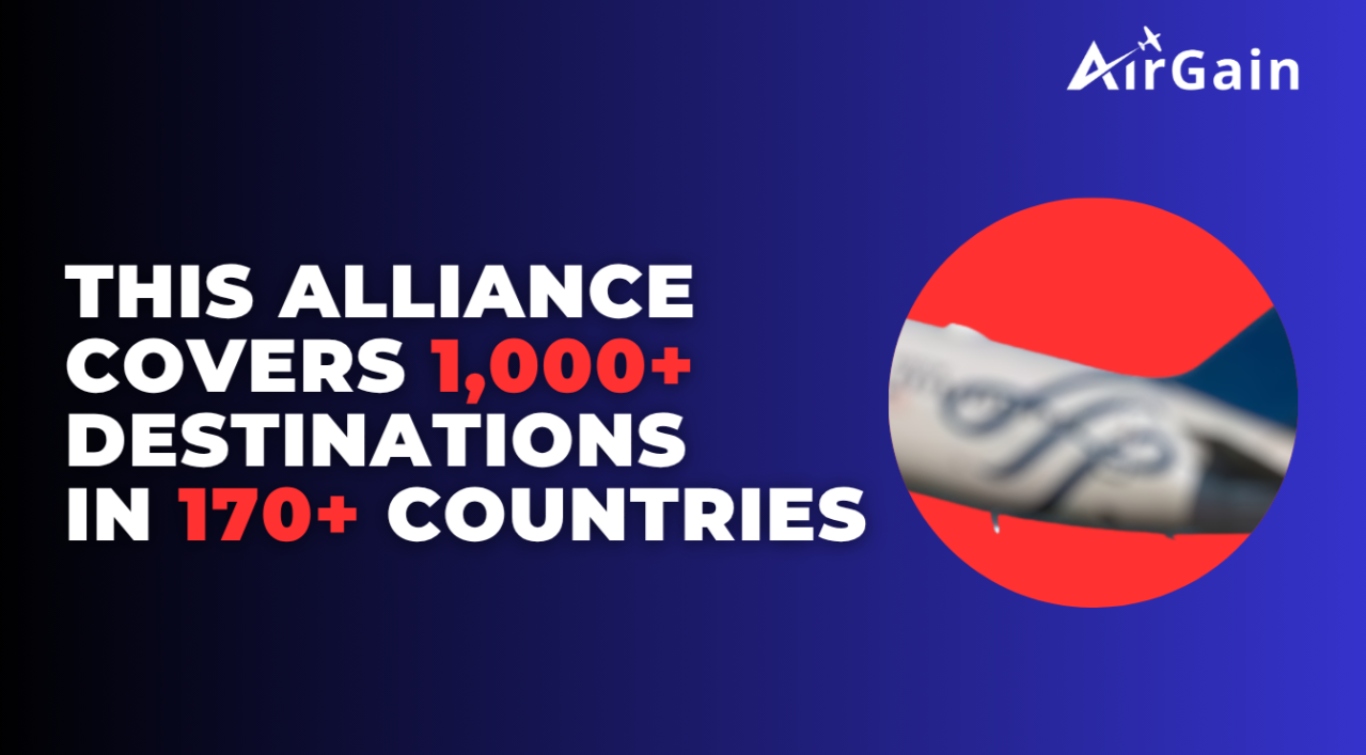11 Jul

Makes International Travel Feel Like a Domestic Hop
Introduction
In today’s competitive aviation landscape, airline alliances are no longer just about shared codes and lounges — they are key enablers of global mobility, pricing optimization, and passenger satisfaction. Among the three major alliances, SkyTeam has steadily positioned itself as the go-to network for smooth international journeys. For airline pricing and revenue managers, understanding how SkyTeam crafts its unique experience can unlock strategic levers for revenue growth and customer retention.
This blog explores how SkyTeam turns complex global travel into a seemingly local affair through operational consistency, passenger perks, and revenue management synergy.
SkyTeam's Expansive Global Network
At the heart of SkyTeam’s advantage lies its comprehensive and well-coordinated network. Comprising 19 member airlines including Delta Air Lines, Air France, KLM, Korean Air, and Aeroméxico, SkyTeam covers over 1,000 destinations in 170+ countries. This span enables seamless connectivity across key economic regions such as:
- Europe: With strongholds like Amsterdam (KLM), Paris (Air France), and Rome (ITA Airways), SkyTeam ensures thorough European coverage.
- Asia-Pacific: Korean Air, China Eastern, and Vietnam Airlines extend the alliance’s reach to both emerging and mature markets.
- Americas: Delta and Aeroméxico create a powerful North and Central American bridge, bolstered by LATAM’s historical partnerships in South America.
For revenue managers, this reach translates to opportunities for joint fare bundling, enhanced interline agreements, and cross-market promotions — all essential tools for maximizing yield on international itineraries.
Seamless Check-ins and Priority Boarding: More Than Passenger Perks
What may seem like minor conveniences — such as a smoother check-in or a shorter boarding queue — are in fact critical components of SkyTeam’s brand promise. Through its “SkyPriority” initiative, premium and elite passengers across all member airlines enjoy standardized benefits, including:
- Dedicated check-in counters
- Accelerated security lanes
- Early boarding
- Priority baggage handling
But the benefits extend even to non-elite travelers. A traveler flying from Seoul to Madrid with a transfer in Amsterdam can experience a single check-in, unified baggage policy, and streamlined transfers — a process that rivals many domestic connections in terms of ease.
From a revenue management standpoint, these enhancements reduce the perceived “pain” of international travel, allowing pricing teams to justify premium pricing on multi-leg journeys without deterring demand. In essence, service consistency mitigates fare resistance.
SkyTeam’s Recipe for a Smooth Global Journey
SkyTeam’s vision of a “harmonized” experience doesn’t just stop at lounges and boarding gates. Its technological and operational alignment plays a massive role in maintaining this illusion of simplicity:
- Digital Infrastructure:
SkyTeam’s centralized digital tools — including the SkyTeam app and Virtual Travel Pass — consolidate itinerary details, COVID travel requirements, and boarding information into one interface. These services reduce information friction and enhance the passenger experience across carriers.
- Lounge Access Across Borders:
The SkyTeam lounge network in cities like London Heathrow, Sydney, and Istanbul offers uniform service and quality standards, regardless of which member airline you’re flying with. These shared facilities reduce cost duplication for airlines and improve asset utilization.
- Coordinated Scheduling:
Hub coordination among members, such as KLM and Delta at Schiphol or Korean Air and China Eastern at Incheon, enables minimal layover durations and better flight timing alignment. This directly influences load factor optimization and higher customer satisfaction ratings.
Such alignment across touchpoints reduces missed connections, rebooking headaches, and service inconsistencies — outcomes that cost both money and goodwill.
Pricing and Revenue Management: The SkyTeam Advantage
For pricing professionals, alliances like SkyTeam are not just a distribution channel — they’re a strategic revenue lever. Here’s how SkyTeam’s setup enables optimized pricing strategies:
- Joint Fare Construction:
Member airlines can create multi-leg itineraries priced under a unified fare structure. This supports attractive fare combinations that encourage longer, higher-yield journeys, such as:
- New York → Paris → Nairobi (Delta + Air France + Kenya Airways)
- Tokyo → Amsterdam → São Paulo (Korean Air + KLM + Aerolíneas Argentinas)
- Codeshare-Driven Load Balancing:
SkyTeam’s interlining allows pricing managers to redistribute traffic among member airlines based on capacity, seasonality, and segment profitability. For instance, if Delta’s JFK-CDG flights are oversold, AF flights can absorb the overflow — reducing loss from denied boardings and protecting top-line revenue.
- Fare Fencing and Cabin Upselling:
SkyPriority benefits give revenue managers a tool to create differentiated fare classes beyond seat configurations — embedding lounge access, speed, and service into upsell narratives. This supports high-margin segmentation strategies.
- Dynamic Availability Sharing:
Real-time inventory sharing and dynamic seat allocation among members allow better inventory control. This is especially critical on high-frequency international routes where fare classes need to be optimized dynamically across operating carriers.
Case Studies: SkyTeam in Action
Case 1: Delta–Air France–KLM Transatlantic Partnership
This joint venture, arguably the strongest in the transatlantic corridor, lets the three airlines act as one commercial entity between North America and Europe. Pricing, scheduling, and revenue are shared — creating efficiencies and higher revenue per available seat kilometer (RASK). For example, they have harmonized fare buckets and booking classes, ensuring seamless transitions and maximized yield.
Case 2: Korean Air and China Eastern in Asia
Both members play pivotal roles in serving intra-Asia demand while feeding long-haul SkyTeam flights. Korean Air leverages SkyTeam’s platform to increase international throughput at Incheon, using coordinated pricing to attract connecting traffic from China and Southeast Asia.
These case studies underscore how SkyTeam is more than a convenience layer — it’s an active enabler of strategic pricing and network profitability.
Conclusion: Turning Borders into Bridges
SkyTeam has mastered the art of removing friction from international travel. Whether it’s a first-time traveler or a seasoned business flier, the alliance creates an experience that feels surprisingly local — as if flying from New York to Rome is as easy as flying from Dallas to Denver.
For airline pricing and revenue managers, SkyTeam’s model presents an opportunity to tap into shared infrastructure, coordinated schedules, and aligned service levels — all of which make complex itineraries not just bookable, but profitable.
In a world where passengers value ease as much as price, and where loyalty is earned through consistency, SkyTeam’s offerings set the benchmark for how alliances can shape the future of global travel. The result? International air travel that feels like a domestic hop — seamless, predictable, and delightfully easy.




